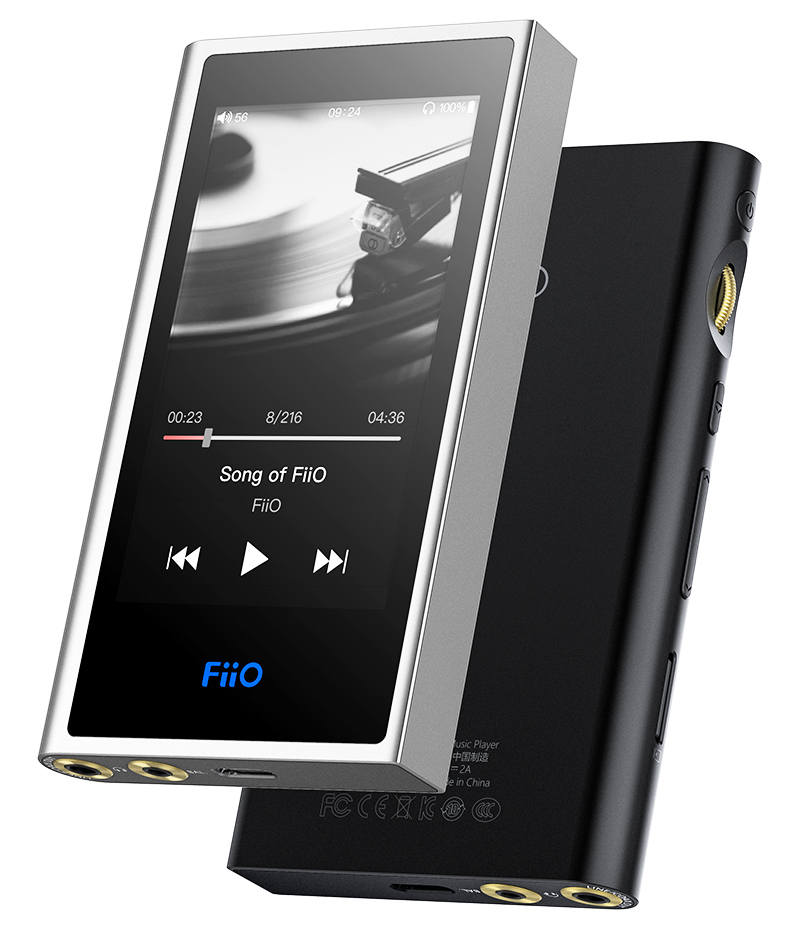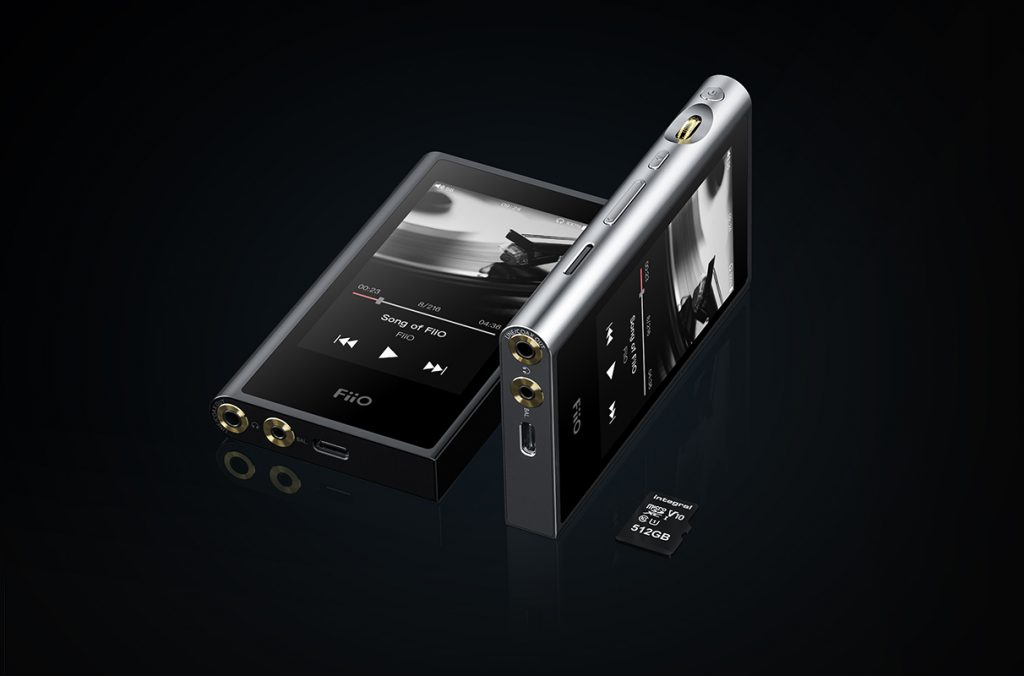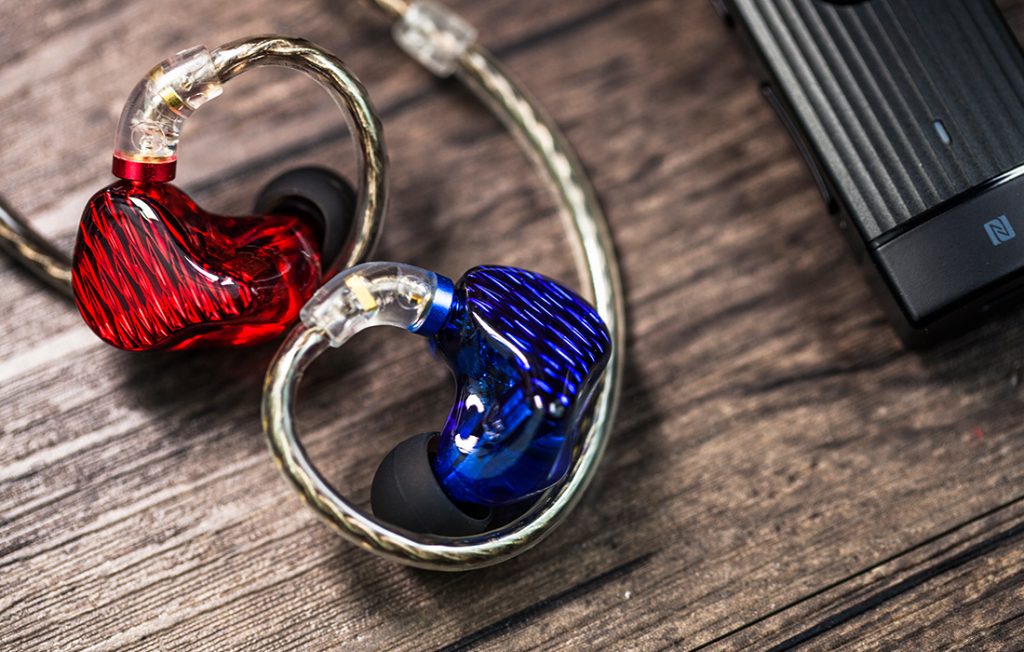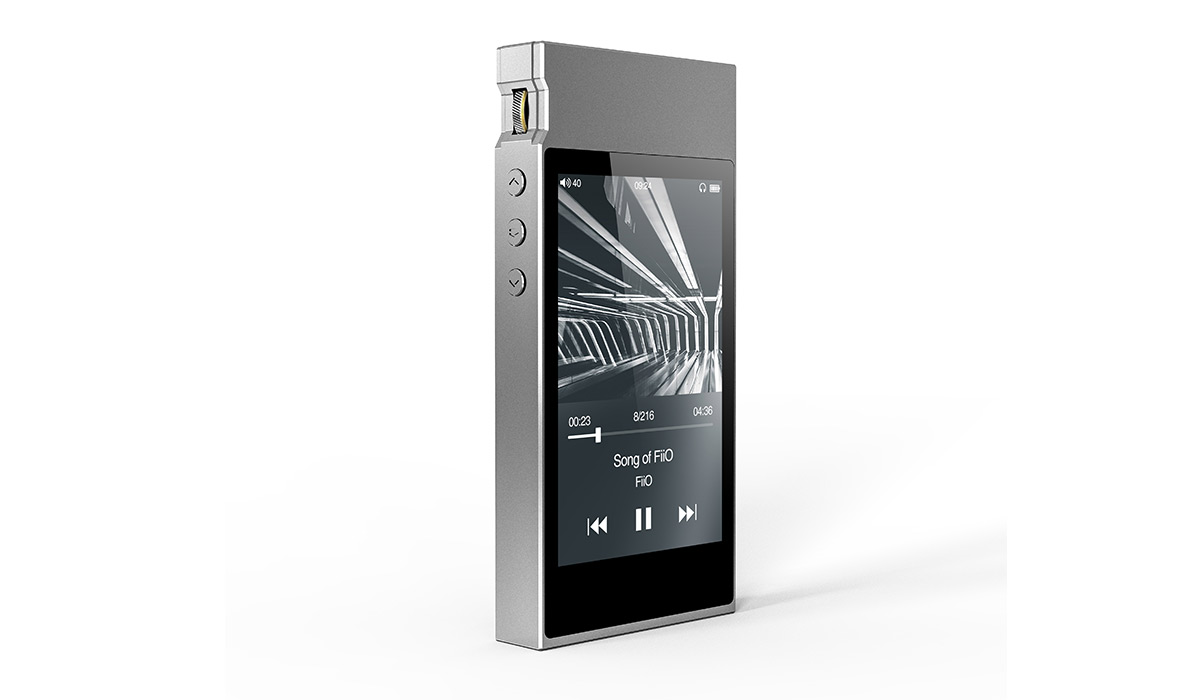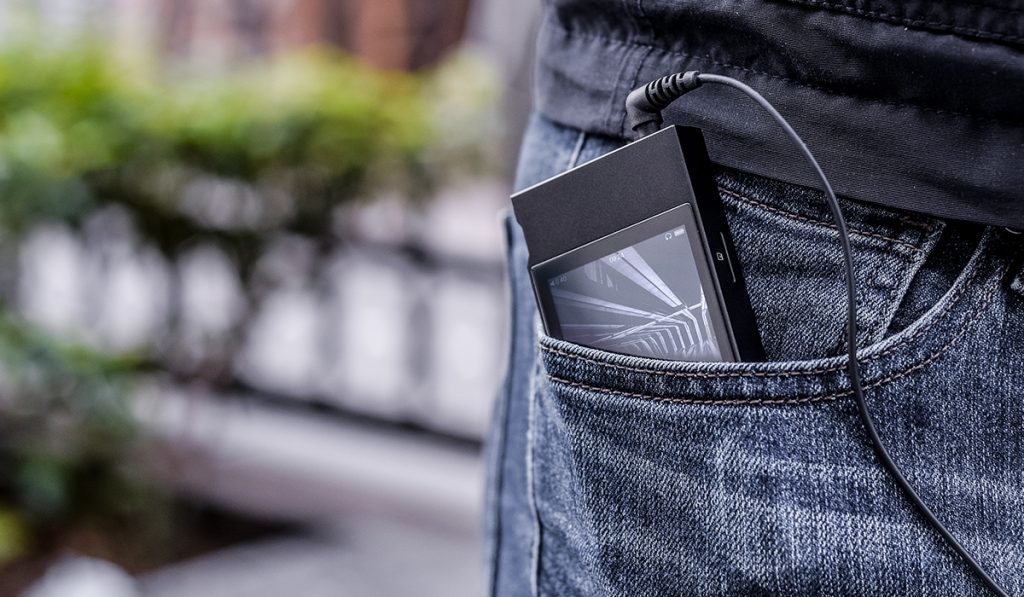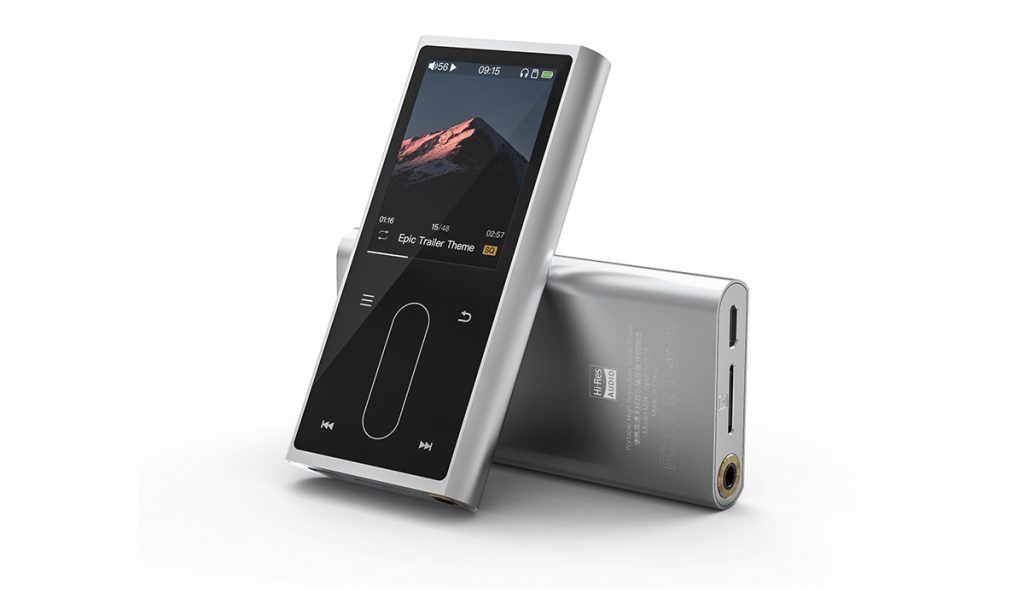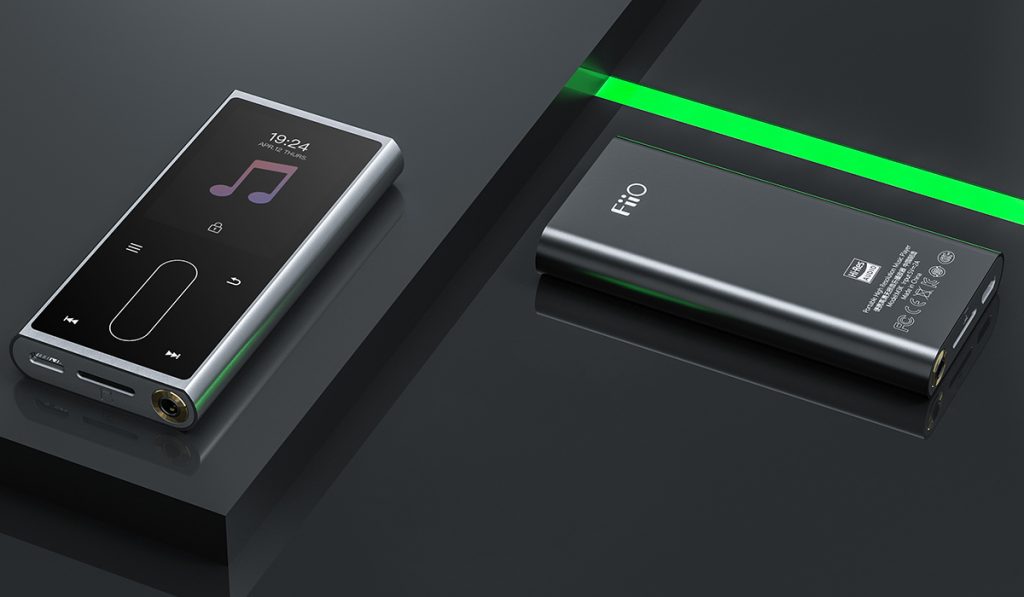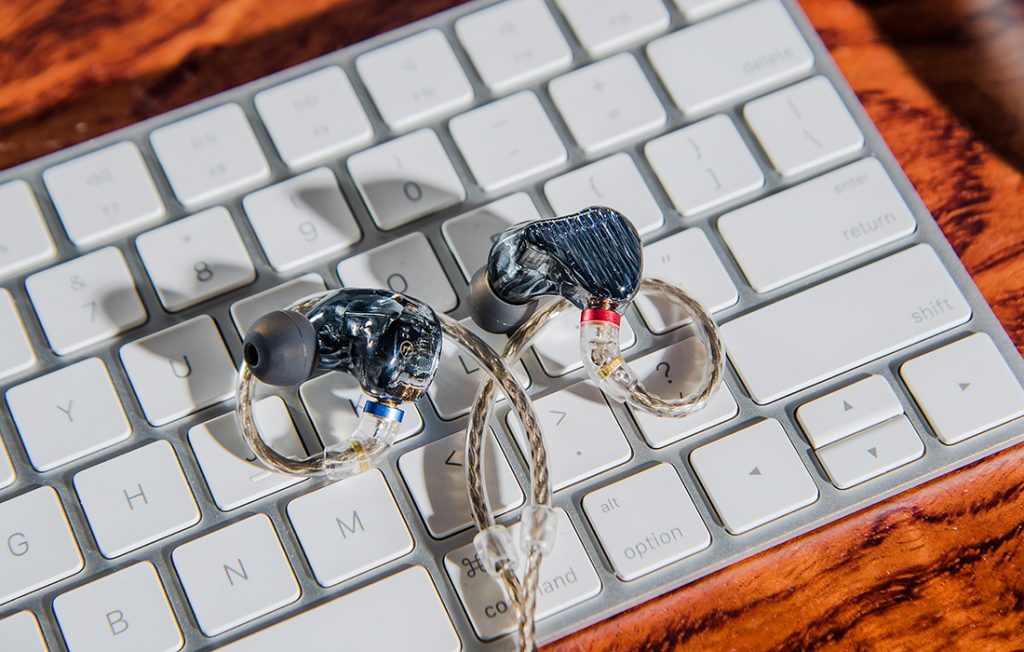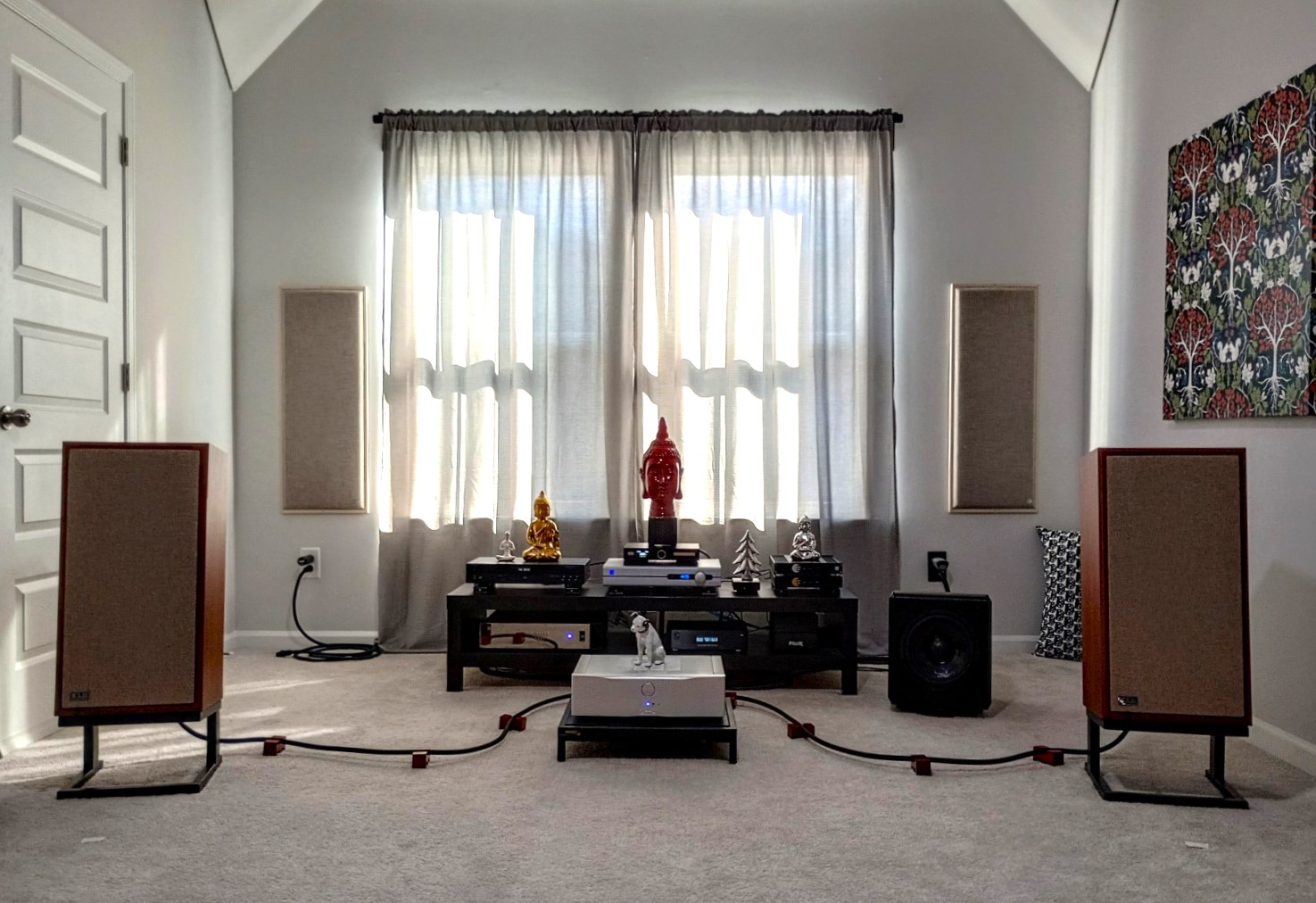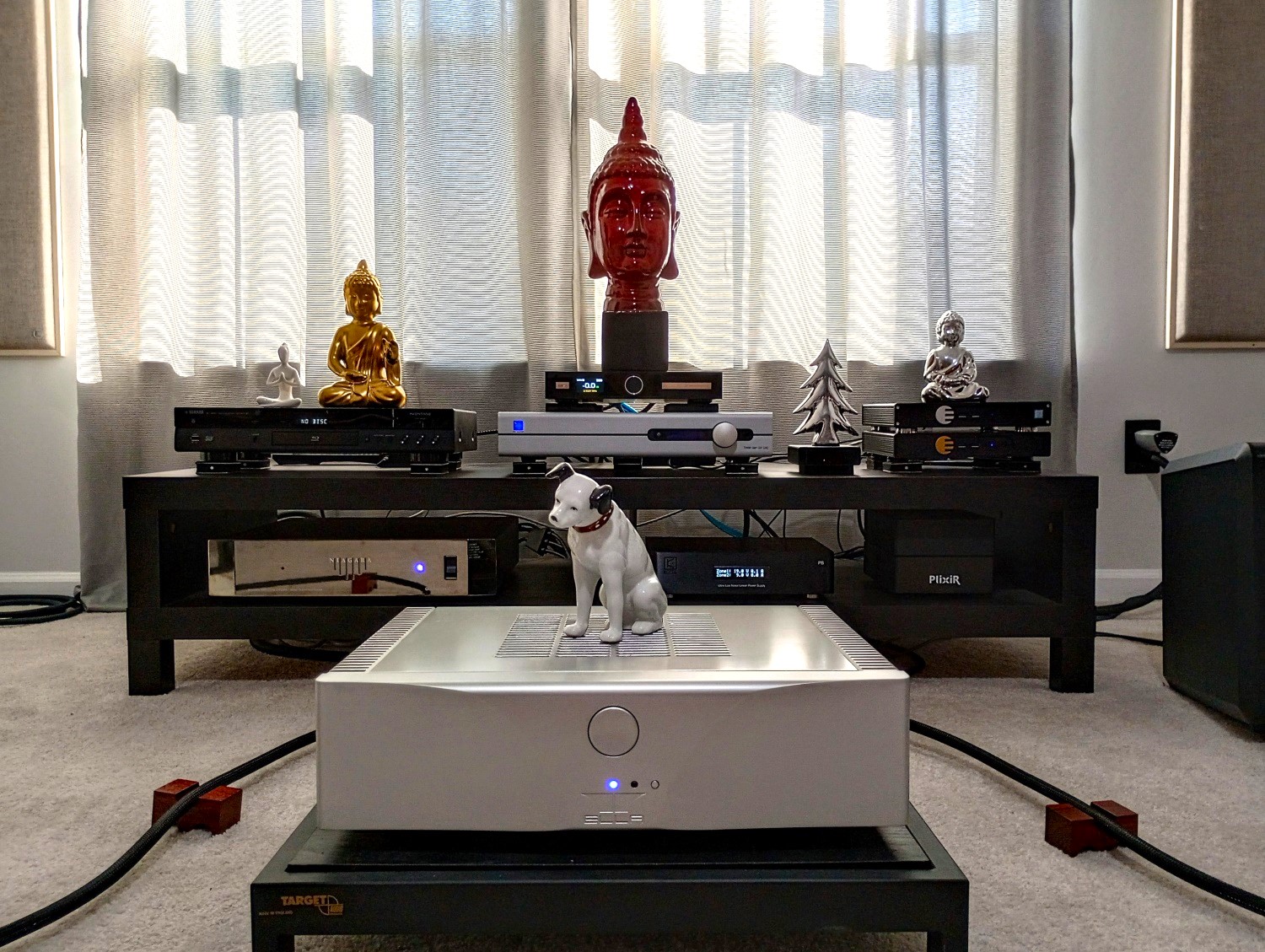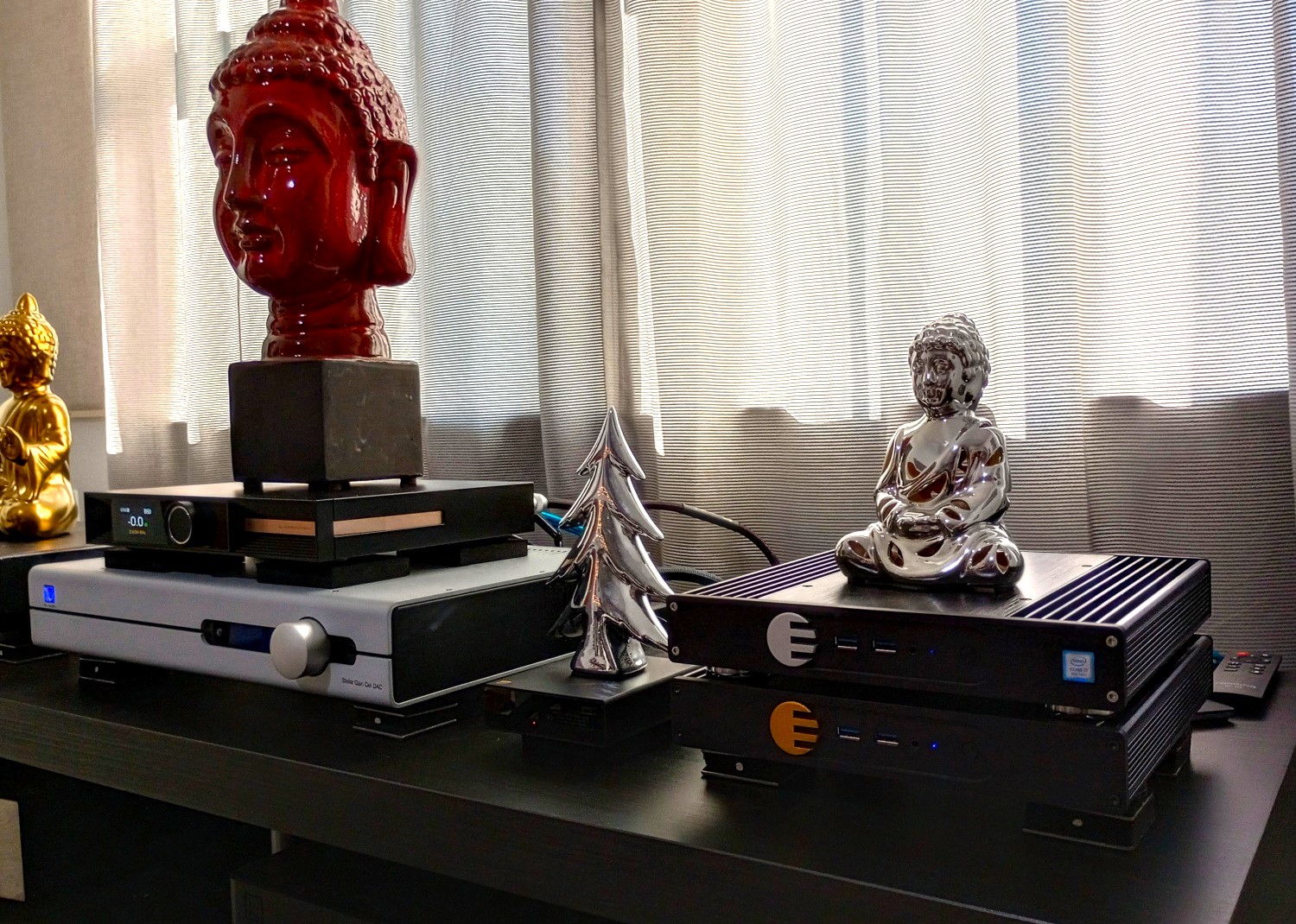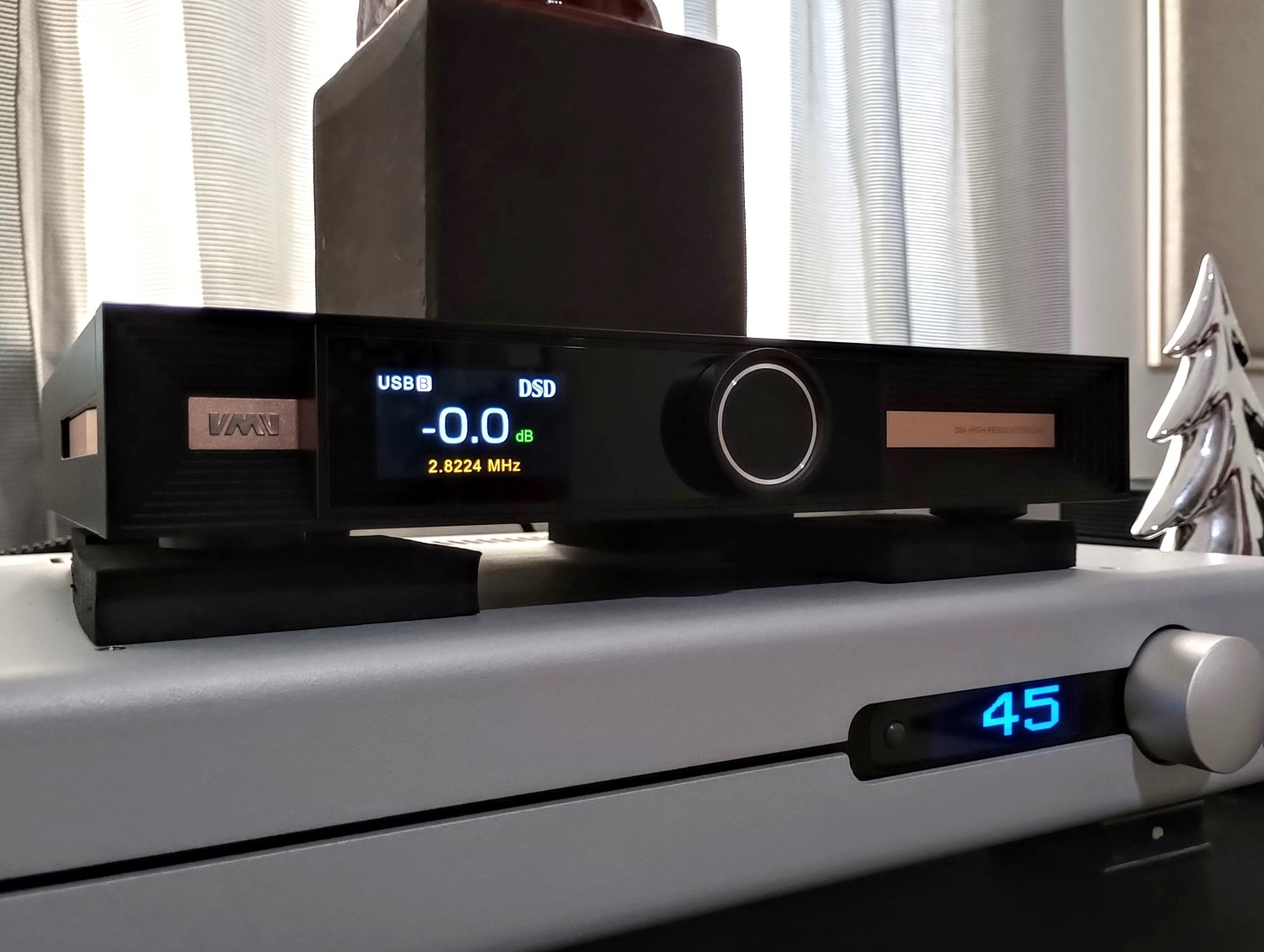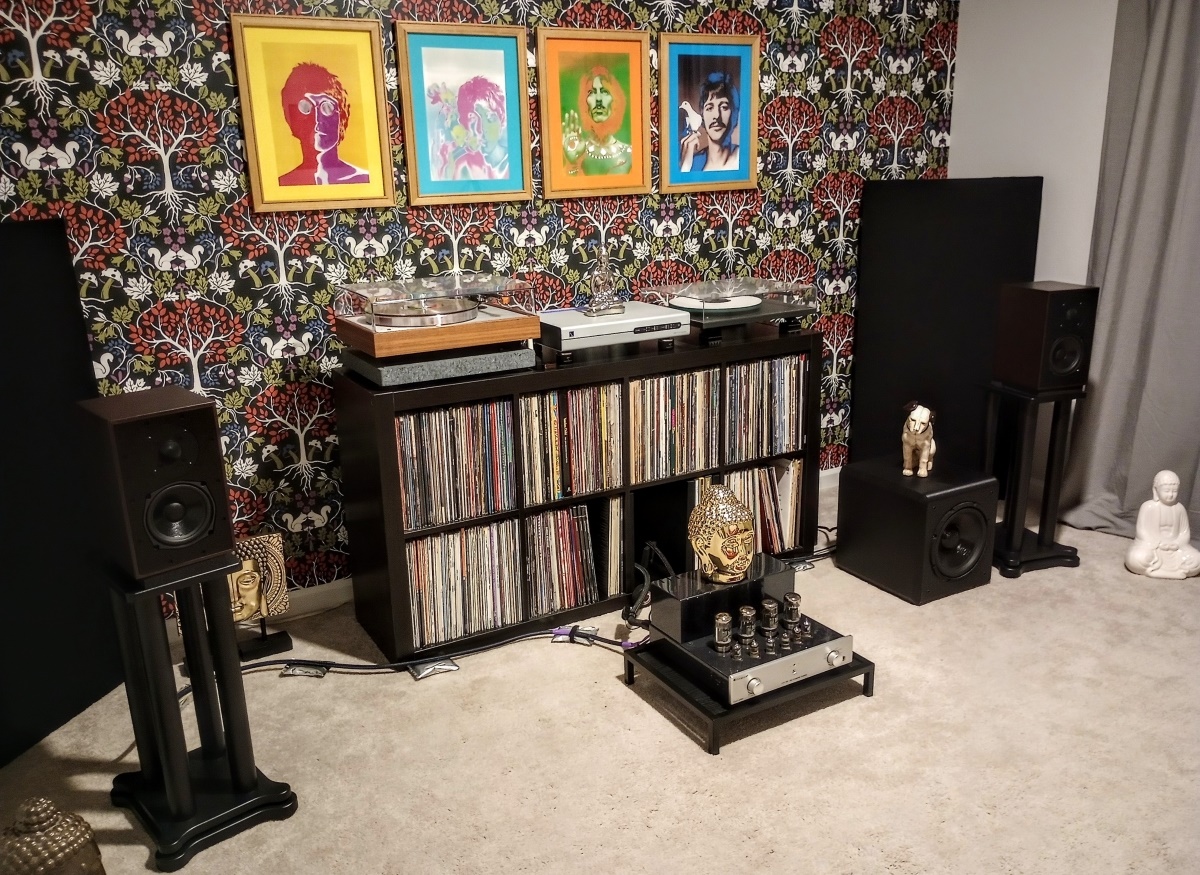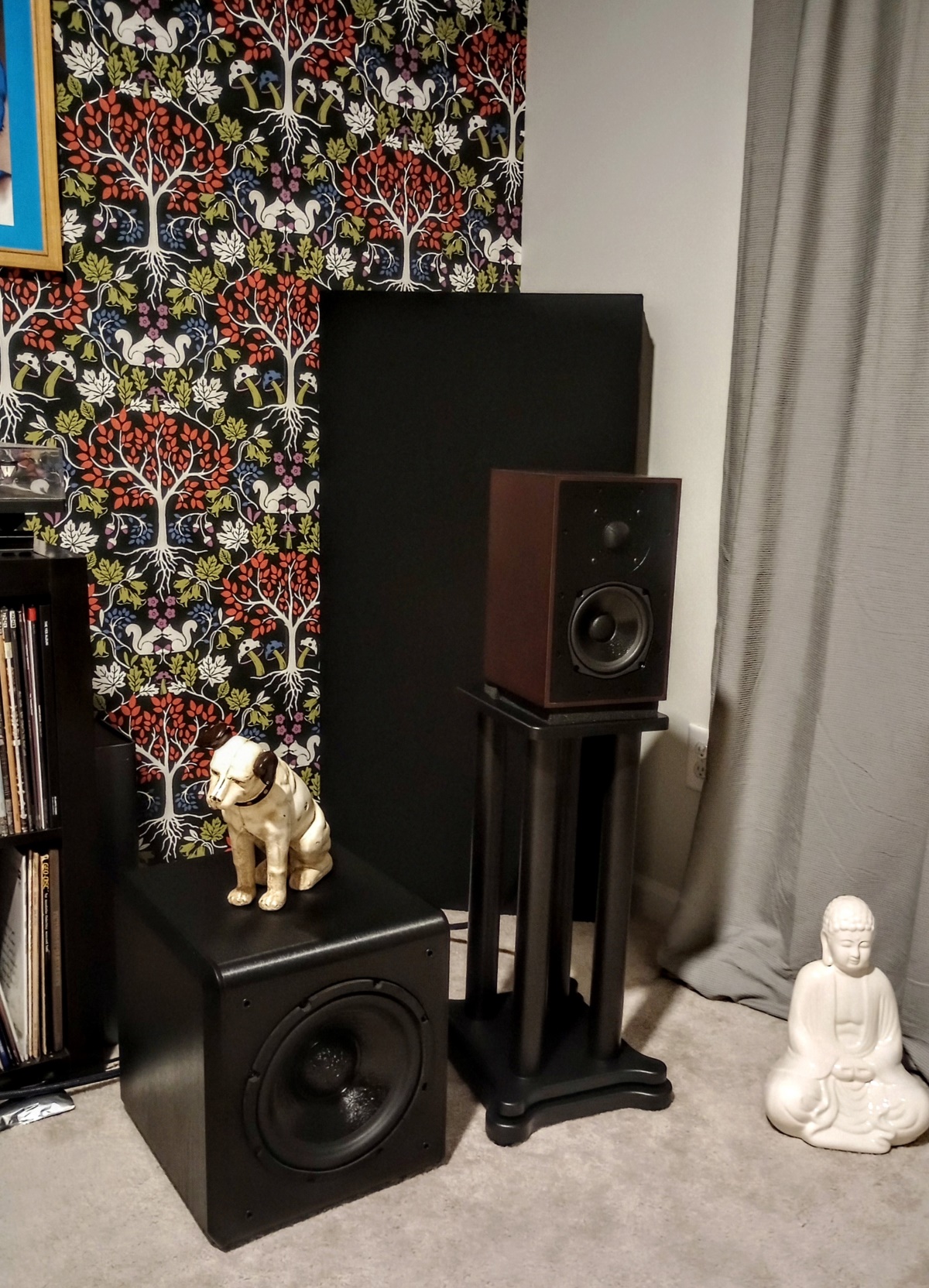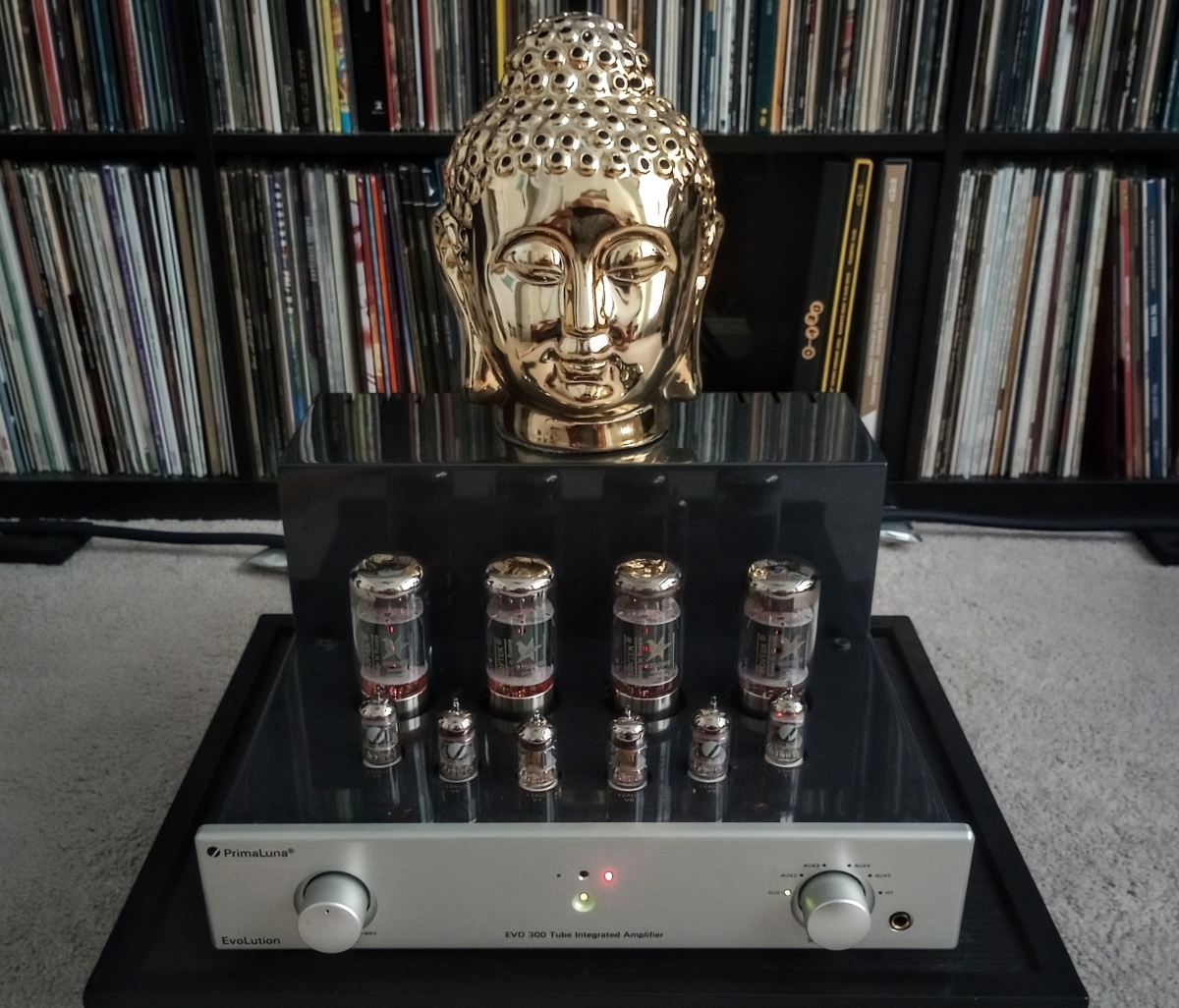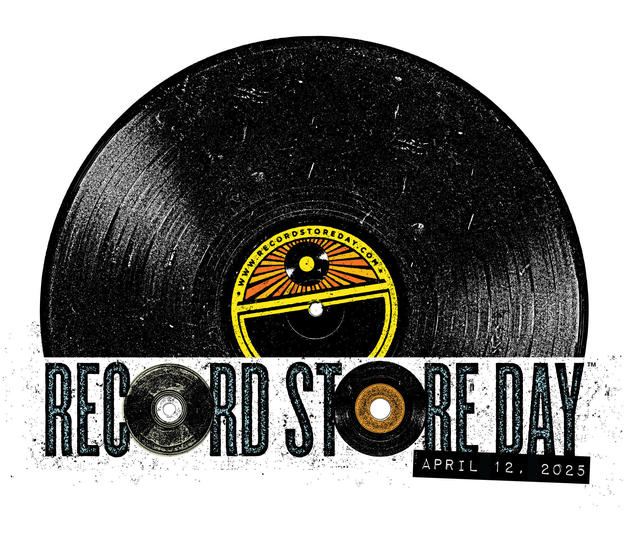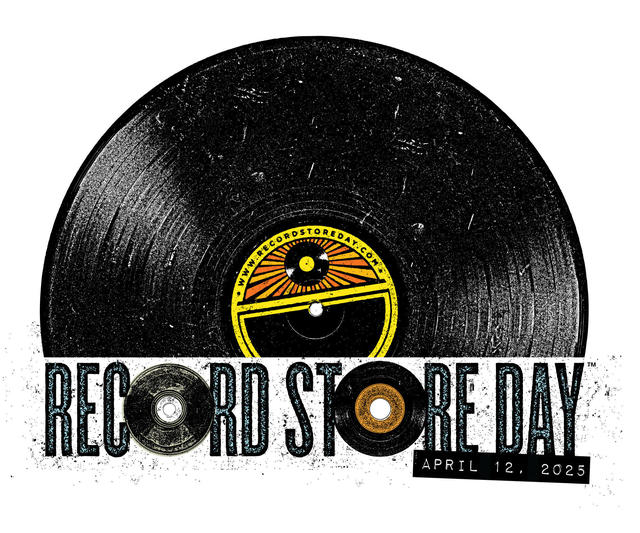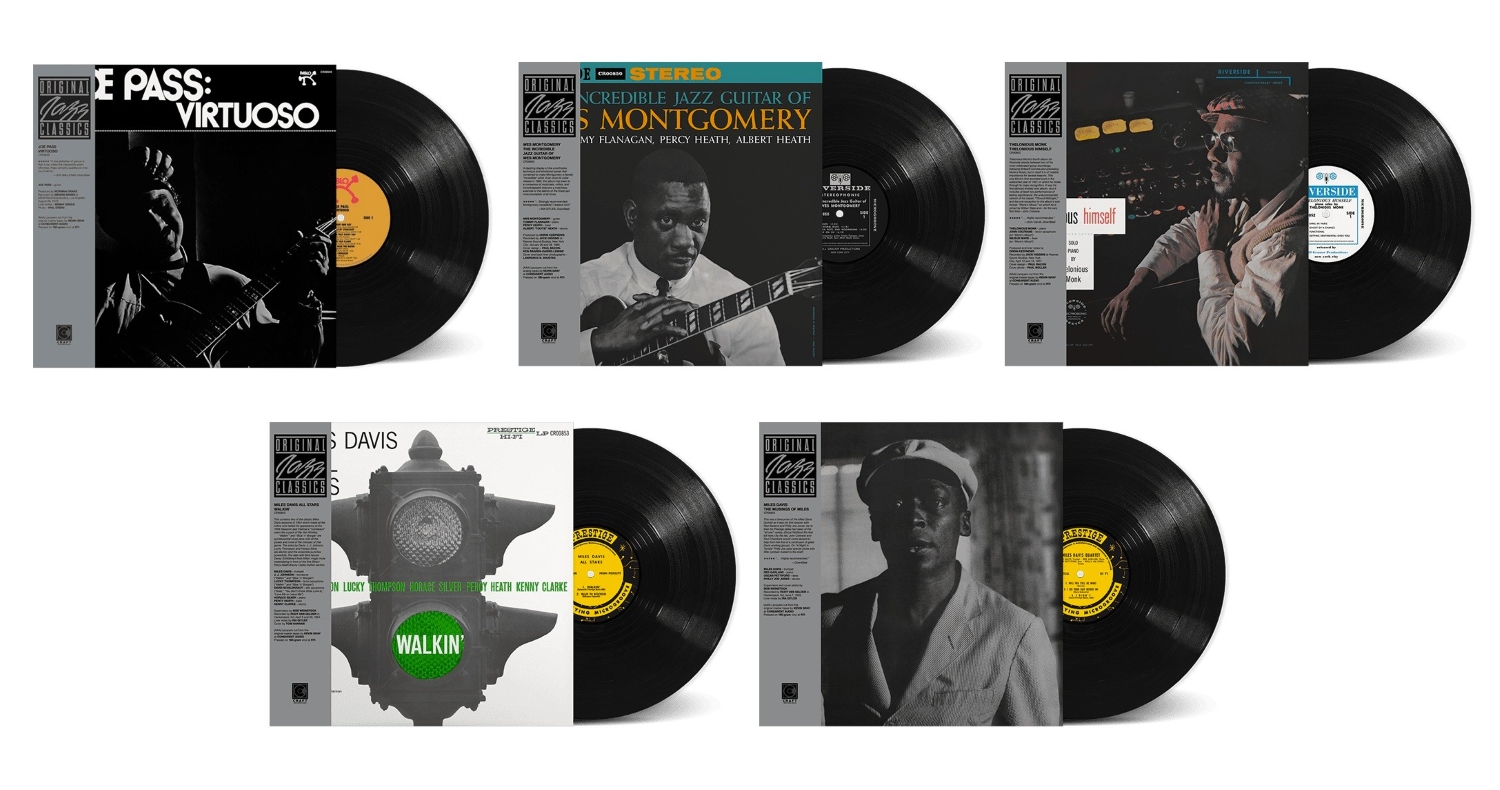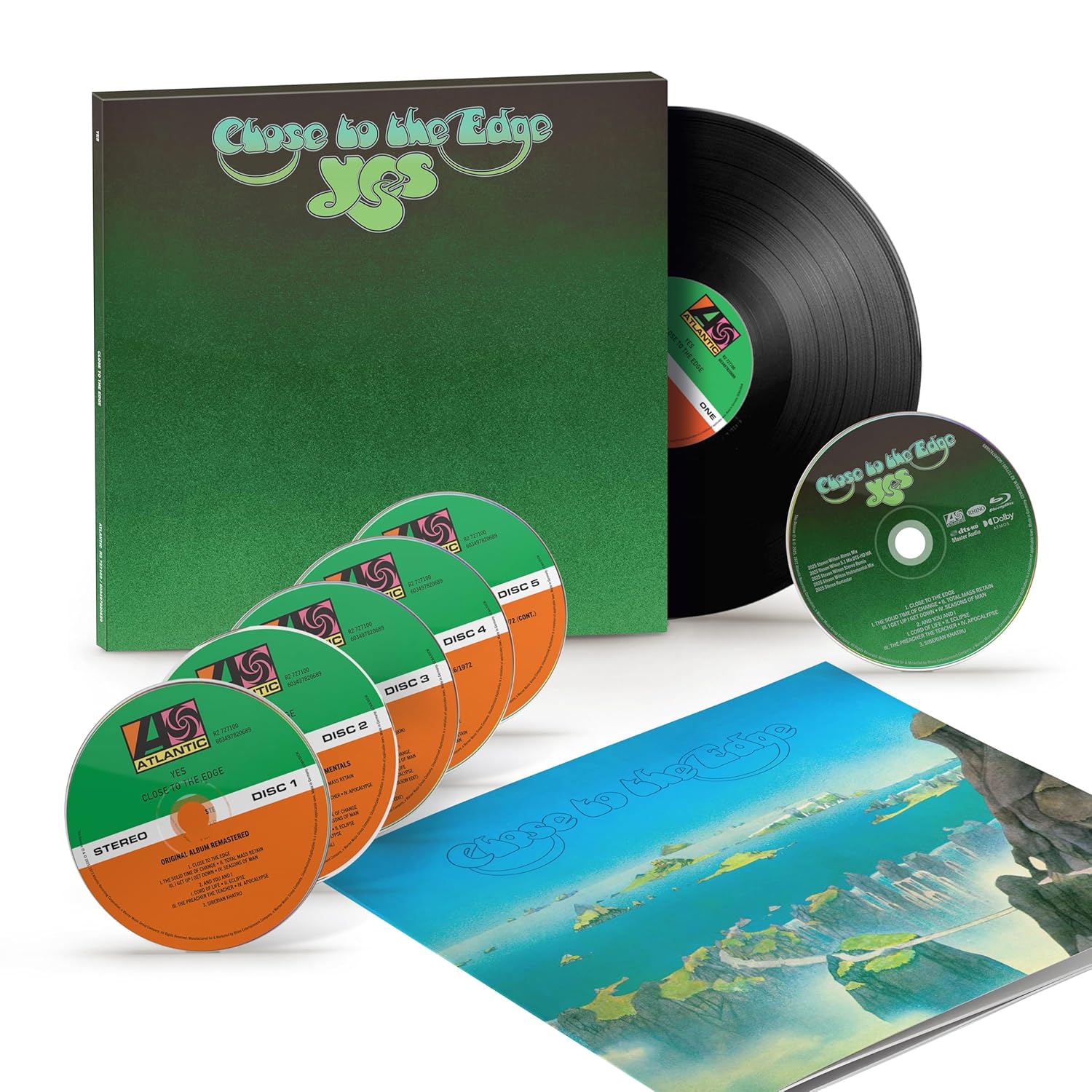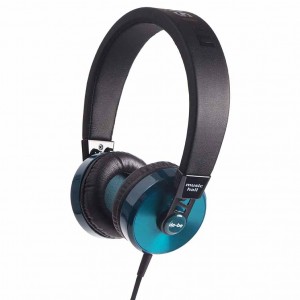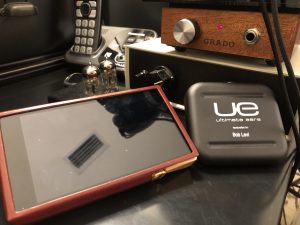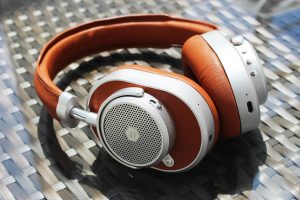Yeah, yeah, I know, I'm rapidly developing a reputation as a Fiio fanboy. The thing is, I put a fair amount of effort into cultivating a relationship with them at a point when they were just really cracking into the North American market. And now, suddenly, they're responsible for a rapid-fire release of multiple product offerings that are not only functionally beautiful, but loaded with audiophile features, and priced very attractively: what's not to love? I'm a fanboy of any manufacturer who offers great products with cutting-edge technology, especially when they're presented at prices I (or just about anybody else) can easily embrace!
The M9 Digital Audio Player
First up is Fiio's recent higher-end offering, the M9 Digital Audio Player—a highly customized Android-based player—which at its $299.99 USD MSRP is a technological tour-de-force of features in a very manageable form factor. Fiio wanted to offer the public a newer, more advanced player that embraced flagship performance at a more affordable price point. It's significantly lighter and somewhat smaller than the X5III—Fiio's prior Android player from 2017—but retains much in terms of features and performance from the more expensive X5III, and surpassing it in some key areas. The big difference between the Android OS in the two players is that the older X5III offers essentially the full Android experience, with the ability to install apps of your choice. The M9's Android OS is a very customized version, which gives you the same user functionality in terms of touch screen access to features, but with a limited number of installed apps—with Tidal among them. Qobuz is now on the scene here in North America (and I definitely prefer it to Tidal!), I was happy to find that there's what Fiio refers to as a "whitelisted group" of apps which can be installed, and that includes Qobuz and Spotify among them. And the M9 will play just about any file codec out there, including any PCM file up to 24/192 or up to 2x DSD. Sweet!
The M9 uses a Samsung Exynos processor chip, which is only a dual core compared to the more expensive X5III's quad core processor. And it's operating speed is theoretically a bit slower at 1GHz versus 1.4GHz for the legacy unit, a feature which I didn't feel limited its performance at all in normal operation. I pay a lot of attention to current offerings from computer manufacturers, and I've seen a lot of laptops that have been recently released with much more advanced processors but slower operating speeds—and they generally sell for a lot more money than competing units with seemingly faster specs. Who knows? I've read a few complaints from purchasers that the M9 is slow to start up and very slow to shut down; while I won't completely disagree, I don't regard either as any kind of real problem. You wait a few seconds for startup, and when you're through, you shut it off and stick it in your pocket while it continues the shutdown process. No harm, no foul. And the smaller form factor of the M9 definitely makes it much easier to just comfortably stick in your pocket.
The M9's multi-touch display screen covers the entire front face of the device. While the overall screen size is a bit smaller than the legacy X5III, its 480 x 800 pixel resolution matches it, and is a step up in functionality and ease of use. The display quality with Fiio's current crop of Android-based players is top-notch, and miles beyond their previous players from just a few years ago; the M9 is a very handsome player. There's also a Fiio logo that appears at the bottom of the display; when the player starts, the logo is illuminated blue to indicate normal operation. If the logo is glowing red, then the M9 is charging the battery. I couldn't get any specifics on this, but while the player's operating, a green glowing light indicates you're playing a high-res file (DSD or PCM bit-rate is indicated); a purple-ish/magenta glowing light indicates that a CD-quality file is playing. Just tap the album art image, and the metadata is displayed and tells you the actual bit rate of the file playing. The M9's DAC complement is a pair of AK4490EN chips; also, same as the X5III, so the digitally decoded sound is really superior for such a low-priced player. But the biggest difference is that the the M9 includes an Actel A3P030 FPGA chipset, which is a variety of Field Gate Programmable Array usually found in much more expensive digital equipment. And allows for a level of firmware and other updates which will keep the M9 on the cutting edge of DAP technology throughout its working lifetime.
Another leap over the legacy X5III is the M9's Bluetooth performance, which also employs a Samsung chipset and has been upgraded to the Bluetooth 4.2 specification. It extends performance from the baseline AptX/SBC Bluetooth codec to LDAC/AptX/AptX HD/SBC—the current state-of-the-art in Bluetooth compatibility and sound quality. All that codec talk translates into exceptional performance: the M9 is not only a Bluetooth transmitter, but also a Bluetooth receiver. And the M9's LDAC technology (developed by Sony) allows Bluetooth streaming of up to 24 bit/96kHz digital files either directly from the player, or as a standalone USB DAC in combination with your smartphone, laptop, iDevice—you name it. The level of performance over previous Bluetooth iterations is staggeringly good! And the M9 uses the USB C-type connector; a standard USB A-to-USB C cable is included, which can be used for charging the unit, or for using the M9 as a standalone DAC with your laptop or other device. A USB C-to-USB C cable is also available from Fiio, making for easy connection to many current devices and computers. Most any feature on the M9 that currently only works with Windows or Android-based devices will most likely be updated to iDevice compatible with a firmware update in the very near future.
The M9 is also WiFi equipped, and easily connects to your home network, or any network, for that matter. WiFi capability is great, especially when it comes to firmware upgrades; the player just lets you know there's a new update available, and it gives you the option to install it. No problems whatsoever. A major improvement over Fiio's traditional firmware update scheme, which requires you to connect your unit to a computer and download the update to your SD card, then disconnect your player and restart the unit while holding down power and volume buttons simultaneously. Not rocket science, but there's definitely a bit of a learning curve involved!
The M9 is also equipped with DLNA technology; this allows you to see any other DLNA device on your network, so you can easily copy music files to your internal storage via WiFi. Or simply stream music to the player directly from your home network. Or from your Qobuz or Tidal account. And with regards to internal storage (via microSD), there's only one slot, but with ever-evolving technology, that single slot will support up to a 2TB microSD card. Good luck finding one—or one you can afford! I can now get SanDisk 128GB microSD cards at my local Micro Center store for less than $30 USD, and 256 GB cards for about $50 USD; that's a boatload of storage, especially if you mostly listen to CD-quality files. And with the newer generation of Fiio players, the microSD cards are hot-swappable, so buy several if you need more space for your portable library.
In terms of connectivity, the M9 has the previously mentioned USB C port; it also includes a 2.5mm balanced headphone jack, as well as a 3.5mm jack. The 3.5mm jack does triple duty not only as a standard headphone jack, but can be internally switched to become the line-out jack. And a 3.5mm-to-coax SPDIF connector is included in the box; connected to that same jack, it allows the M9 to function as a Bluetooth receiver to digitally stream via the SPDIF connection to a variety of devices. The versatility and connectivity of a device at this price point is off-the-charts good.
The signal to noise ratio of the M9 is 117dB versus 120dB with the X5III. Total Harmonic Distortion for the M9 is a bit lower, <.002%THD versus <.003%THD in the X5III, and the M9 has a greater frequency response range of 5Hz to 80kHz. The X5III peaks at 55kHz. All these differences are pretty marginal between the two players, however, what gives the X5III the edge in terms of ultimate performance is its very high output power—which is nearly four times that of the M9. This will allow it to drive much larger, full-sized headphones to more satisfying output levels, and significantly justifies its increased cost. The M9 may fall a bit short in this regard, but trust me, it will drive Fiio's (or anyone else's) in-ear monitors to deafening levels. Virtually every other performance aspect of the M9, short of massive power output, is either equal, more advanced, or superior to the X5III. With a standard headphone connected, battery life is about ten hours; with the higher-powered balanced connection, you'll get about nine hours. Powered down and unused, it'll go about forty-five days and still retain most of its battery power.
Oh, and by the way, all my recent listening to this remarkable group of DAPs was through Fiio's newest, flagship in-ear monitors, the FA7, Fiio's finest product offering in that category yet, and—I predict—will blow the doors off the market for reference-quality in-ear phones at their MSRP of $299.99. They're truly remarkable, and incorporate remarkable levels of advanced technology—like 3D printed shells—that will shock buyers with their ergonomic, modernly stylistic good looks and superb comfort. And the sound quality: Fiio's best ever—full review forthcoming soon. And although I'm a huge proponent of the superiority of balanced cables, the supplied silver-clad-copper 3.5mm cable that comes standard with the FA7 is vastly superior to anything else I had on hand with a standard 2.5mm balanced tip. The sound of the M9 through Fiio's new flagship earphones: nothing short of magnificent! And the M9 has five digital filters to choose from to allow you to tailor the sound to your personal preference.
The M7 Digital Audio Player
The M7 is the next step below the M9 among Fiio's latest offerings. It's built to a price point where the focus is obviously on offering a great sounding player that retains the M9's good looks, but with a slightly reduced feature set. The form factor is very similar to the M9; it's a bit smaller, and just a bit lighter—that gives it even better marks from a portability standpoint. And it also incorporates a highly customized Android OS; the recent firmware update greatly improved its functionality. There are notable exceptions from the OS offered with the M9; there's no built-in WiFi, so there are no Android apps for network streaming or file management included. The lack of WiFi obviates the need for DLNA support, as well. And the unit employs a single ESS 9018Q2C DAC chipset, which is a very complex and capable chipset with capabilities that far exceed those offered by the M7. There is an onboard FPGA present, though its complexity doesn't match that of the chipset present on the M9, so firmware updates are downloaded from your computer to the microSD card and are installed from there. However, the mere presence of such advanced internal chipsets bodes well for the M7's future update potential.
The M7 has no balanced headphone connection, and that's not surprising at this price point; listening through Fiio's flagship FA7 earphones pretty much makes this a moot point as far as I'm concerned. Amplifier power is significantly lower, but not such that I wasn't able to achieve satisfying sound pressure levels through the FA7s. I actually only pushed the volume control marginally over the midpoint with most of my listening, and that was plenty loud for me! The Total Harmonic Distortion rating is a tad higher than the M9 at <.004%THD, but again, that's a really marginal consideration and well within normal tolerances.
But there are many shared commonalities with the M9. While the M7's display only covers about three-quarters of the front face of the player, it maintains the 480 x 800 pixel resolution, and looks really superb. After a recent firmware update, its touch functions replicate the M9's virtually identically, and it now also includes the same menu drop-down capabilities that allow you to access the Android menu directly from the playback screen. Both units share the same Samsung Ekynos 1.0GHz, dual core processor, and the M7 also uses the same Bluetooth 4.2 chipset employed by the costlier unit. Bluetooth performance is on an equal footing technologically and from a sound quality perspective, and like the M9, the M7 offers Bluetooth receiver capabilities.
The M7 offers the same USB C connectivity as its more expensive sibling, and it also matches its microSD card file storage capacity potential of 2TB, although they currently only confirm compatibility up to 512GB. The recent firmware update also upped the level of file type compatibility to matching that of the M9, and it also improved the display of file types such that it now identifies when you're listening to a track that's either DSD or higher resolution PCM. Touching the album art display shows the tracks' metadata, and that makes it very easy to confirm what level of DSD or other high res tech you happen to be playing. The functionality matches the M9 exactly, and is a really nice touch. And the recent firmware update also added in three digital filters (versus the M9's five), which allows a nice range of listening preference customization.
There are a few areas where the M7 actually exceeds the performance offered by the M9, most notably with its battery performance, which at 20 hours of playback doubles that of the M9. The absence of the WiFi function running continuously probably significantly adds to the battery life of the M7. And it also gives battery standby time of up to 40 days or so, so the unit can hold an almost full battery charge for an extensive idle period. The M7 also includes an FM radio app, which works surprisingly well and uses the attached headset as the FM antenna. I found that even in my relatively rural setting, I was able to pick up a surprising number of local stations, and all with surprisingly good sound. And there are color choices for the M7, you can also get the player in anodized red and blue finishes as well as the M9's silver or black options.
The M3K Digital Audio Player
The Fiio M3K is their current baseline Digital Audio Player with an MSRP of $69.99 USD, but don't laugh it off—it offers a really remarkable level of performance and features and should not be dismissed simply because of its sub-$70 price point. The M3K is built around an Ingenic 1GHz, single core processor chip, and the DAC chipset employs a single AK4376A; as with the M7, the supplied chipset is capable of performance far beyond what the M3K offers. And it employs a Linux operating system, which is totally surprising at this level—the M3K is not a child's toy. The display screen—while considerably smaller and lower resolution (240 x 320) than the other two DAPs reviewed here—is remarkably good-looking compared to Fiio's previous entry-level players. It's not a touch screen—not possible at this price point—however, operation of the M3K is controlled through physical and touch buttons on the face of the unit. It's surprisingly intuitive, and functionally far beyond the rotary-wheel controllers of prior Fiio DAPs. Portability is outstanding: size-wise, it's literally tiny compared to the other two players.
Charging and computer connection is through a micro USB port with a supplied cable. Battery life is about 24 hours, with a standby time of up to 38 days. I can't begin to say how impressed I am with the battery life of these players, and how after weeks (sometimes months) they still carry an undiminished charge. As with the other players here, defined storage capability through the single microSD slot is 512GB, though the capacity exists for it to eventually go upwards of 2TB—astonishing for a player at this price point. The signal-to-noise rating (117dB), THD (<.004%), and amplifier power are on par with the much more expensive M7—again, shockingly good for an entry level player. Lotta shocks here, but this is the real shocker for me: not only does this entry level player include true gapless playback, it also will play high resolution PCM up to 24/192 and 1xDSD files—with the chip capability to play much higher resolution files. And it even shows you the metadata to confirm everything for you. Simply remarkable for a sub-$70 player, where it's more of a matter of all the cool features included versus any glaring omissions.
Fiio has a history of continual improvement to their DAPs—which is a really good thing—over the months these players have been in-house, I've updated the firmware several times each. In the case of the M3K, there are a few instances of "buggy behavior" that need to be addressed with this otherwise really good player. First real issue: even though the primary language is set to English, I've encountered numerous instances where the various menus and item entries are a mix of English and Chinese, adding some minor difficulty to the playback process. Issue number two: during restarts, folders or albums that display properly alternate between properly displaying and displaying as an "unknown folder"—also adding to the confusion. Issue number three: some images alternately refuse to display, and some refuse to display period. None of these are deal breakers—especially at this price point. But in light of the functionally perfect behavior of the two other perfectionist players in this survey, it just leaves the impression that the M3K is a bit half-baked. Hopefully a firmware update will resolve some of these problems in the near future.
How do they sound?
As I mentioned above, Fiio's new flagship in-ear monitors, the FA7 showed up late in the review period. So I took the opportunity to check out the sound of all three players with top-of-the line phones that might otherwise be out of the realm of possibility for purchasers of these relatively bargain DAPs. Would their performance be lifted significantly? In a word, yes! Just as an FYI, none of these players has a bass-boost switch, and I did all my listening with the internal equalizers of each set in the flat position.
The M9 is a remarkable player in every aspect, and its sound quality was nothing short of exemplary. Everything I played was very detailed, but musical, and with a touch of warmth that gave the resulting sound a very pleasing but powerful character with very tuneful but not overpowering bass. But also with a very analog-like sound that totally transcended its all-digital origins. The sound of this combo was top-tier in every respect, even though I rarely pushed the volume level much beyond the mid-point on the dial. The sound quality was never fatiguing, and never became congested or overpowering.
The M7 is another perfectionist player, despite not being completely on par with the M9 in terms of functionality and features. That said, I found the sound to be really, really good, but just not on the same excellent level as the M9. It just didn't sound as—for lack of a better word—organic as the M9. Whereas the M9 handled full orchestral passages and complex jazz passages with plenty of aplomb, the M7 seemed, well, a bit less convincing. It's not that the M7 did anything really wrong—it just wasn't completely right, either. That said, it's undeniably the best-sounding sub-$200 digital audio player I've ever heard.
I have a hard time finding a great deal of fault with the budget M3K, because it's nowhere near the same perfectionist level attained by either the M9 or M7. A sub-$70 USD player that plays high-res files, and gaplessly, as well? It sounds surprisingly good, especially with the FA7's, but push the volume a bit, and things begin to somewhat fall apart. A telling example is the opening track from the excellent new release Momento Immobile by rising operatic soprano Venera Gimadieva, "Eccomi in lieta vesta.. .Oh! Quante volte" from Bellini's I Capuletti. On this classic from the Bel Canto repertory, Gimadieva's voice in this aria ranges from purely liquid to sometimes absolutely piercing. On the M9, the sound quality was nothing short of sheer perfection, but the M3K couldn't reproduce her vocal peaks without an added brittleness. And this track must be listened to at reference levels to experience the full effect. The M3K isn't the ultimate in fidelity, but I really wouldn't expect so from a player at this bargain price point. Even so, it does a lot of things really right. I found the sound quality of DSD files on the M3K was on an almost equal footing with the other two, much more expensive players. Actually, and in general, I was surprised by how really great and natural DSD files sounded on any of the players, far and away bettering anything else I played on them. DSD playback just sounded more natural, and more like a really great analog source.
Fiio is making great strides in all the right directions with their latest group of Digital Audio Players. And it's especially exciting to see them offering features and functionality one might not normally see at these very reasonable prices, even with the M9, the most expensive of the three. And they're constantly fixing niggling issues with firmware updates. I give the M9 my very highest recommendation; at $100 less, the M7 also gets my recommendation. The M3K has some minor issues—if Fiio fixes them, I'll report back; regardless, the M3K remains a remarkable achievement for a lot less than what many audiophiles might pay for a decent meal.
Fiio M9 Digital Audio Player
Retail: $299.99 (USD)
Fiio M7 Digital Audio Player
Retail: $199.99 (USD)
Fiio M3K Digital Audio Player
Retail: $69.99 (USD)
Fiio
All images courtesy of Fiio




